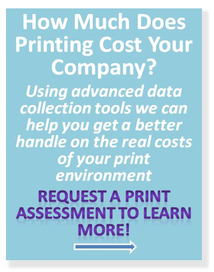For many small businesses there is no single person on their staff that is designated as the IT manager for their computer network. On the other hand there is always someone who ends up with the role whether defined or not. Here's how you can figure out who it is and whether you have ended up with the role by default.
First to understand the potential of what defines this role you have to evaluate what an IT manager does if there is a position.
-
Takes responsibility for the installation, management and operation of the computer infrastructure of a company.
-
Takes responsibility for the security of the data in the computer systems and all workstations which are connected to the computer network.
-
Takes responsibility for the operation of any backup, antispam, antivirus and other specialty tools which impact the network.
-
Takes responsibility for the choices of operating systems and other software tools which will be run within the company. This may involve liasing with business operations people, accounting and other management staff to determine what software tools will be required to assist employees to do their work.
-
Manages the process of keeping software up to date, patched and securely running within the network.
-
Provides assistance and guidance to others within the organization on how to use the IT resources provided and how to maintain their files in an organized or secure manner.
-
Has decision making or strong recommendation authority over purchases of hardware and software for the computer systems.
-
Has a hand in choosing external resources who will assist with the operation of the IT network and systems. In many small companies the IT support company may take on some of the roles of the IT manager in a larger organization.
-
Acts as the help desk for users who have difficulty with using the systems including responding to issues around passwords, printing and connectivity.
-
Will interface with external resources used to connect the company to the internet and potentially for telephone if VOIP technology is used.
-
Is expected to keep aware of IT related activities which might have an impact on the operation of the network including threats, warnings, computer upgrades and significant operating system changes.
Ad hoc I.T. management
One of the key functions of an IT manager which is usually lacking in the the ad hoc role is the planning and design of the network system. This is something which would normally be part of any signficant IT role. This function is often not done in ad hoc managed IT networks and can lead to challenges over time.
The eleven components listed are not totally comprehensive but do include most of the pieces which need to be considered in a business. Where the system becomes challenged is that in many small businesses these components are not articulated and are left to chance.
Senior managers may be involved in software choices or hardware purchases as they are seen to be the items with big impact on the budget or business. Another person is left with the ad hoc help desk role and has to do some of the repetitive tasks like back up. Someone else is left to be the physical device repair or the person involved in acquiring printing equipment.
IT decisions do not get made based upon a plan but are the result of equipment failure, software glitches or externally created problems. Often workstation operating systems are ad hoc in nature driven by the apparent need to replace hardware as it get older or unreliable rather than as a means to have uniformity and ease of maintenance.A better way
Very few businesses can operate without a significant IT component due to the forms of communcation and the move to electronic systems inherent in a modern business. Even small firms will have several devices and multiple software components to manage. Initially a business owner may be able to handle the basics with a bit of outside help, usually from a vendor but eventually some form of IT management protocal will need to be established.
This usually leads small businesses to developing a relationship with one or more IT related vendors. The challenge is to understand this relationship and to make sure that each of the components of IT management is defined in the arrangements made. If there are several vendors involved understanding where they over lap and where their services will leave holes is crucial for the business manager. It may be possible to have one vendor handle the bulk of the tasks outlined above but it is important again to define this relationship and make sure the key elements are fully understood between the parties.
One of the most challenging things for IT vendors is when a client asks them to support their operation on a time and material basis and then gets upset when something goes wrong in the system because something was not 'planned for.' Unless defined otherwise, most time and material contracts are just like that, the IT vendor does work that is requested but the business operator is responsible for defining the work needed and the manner of its design. If you don't have the expertise and the resources to carry out the roles above then it is important to figure out which you can do and then contract explicitly for the balance. Leaving the IT environment to chance is very unhealthy in our electronic business enviroment.




